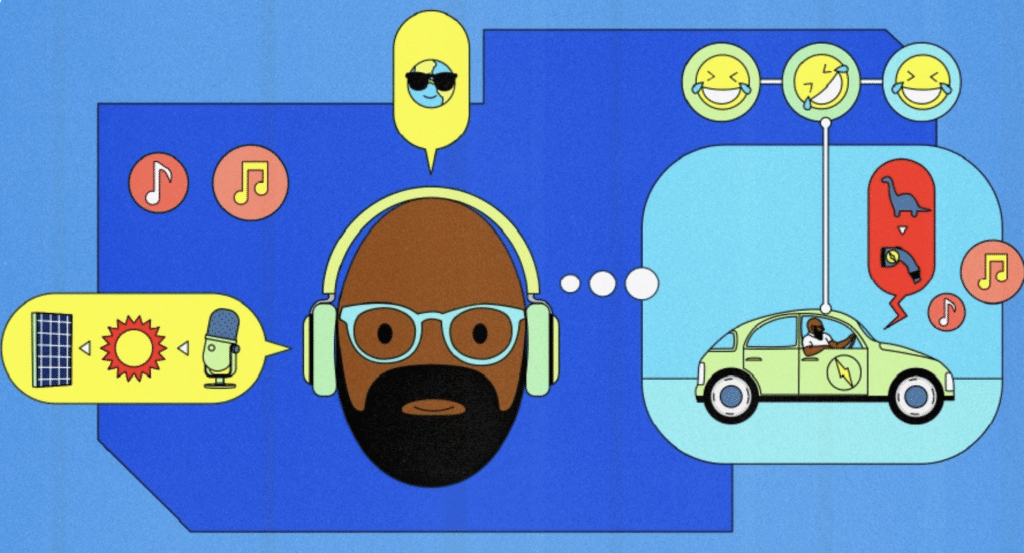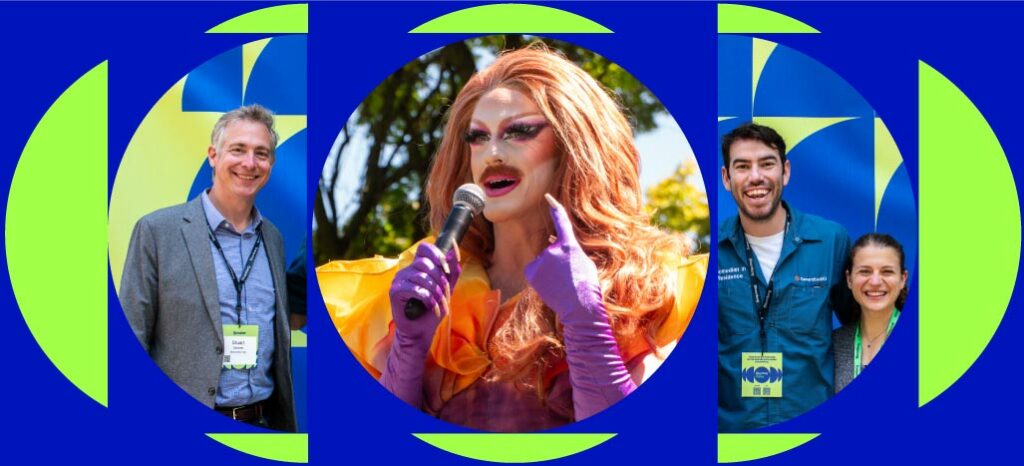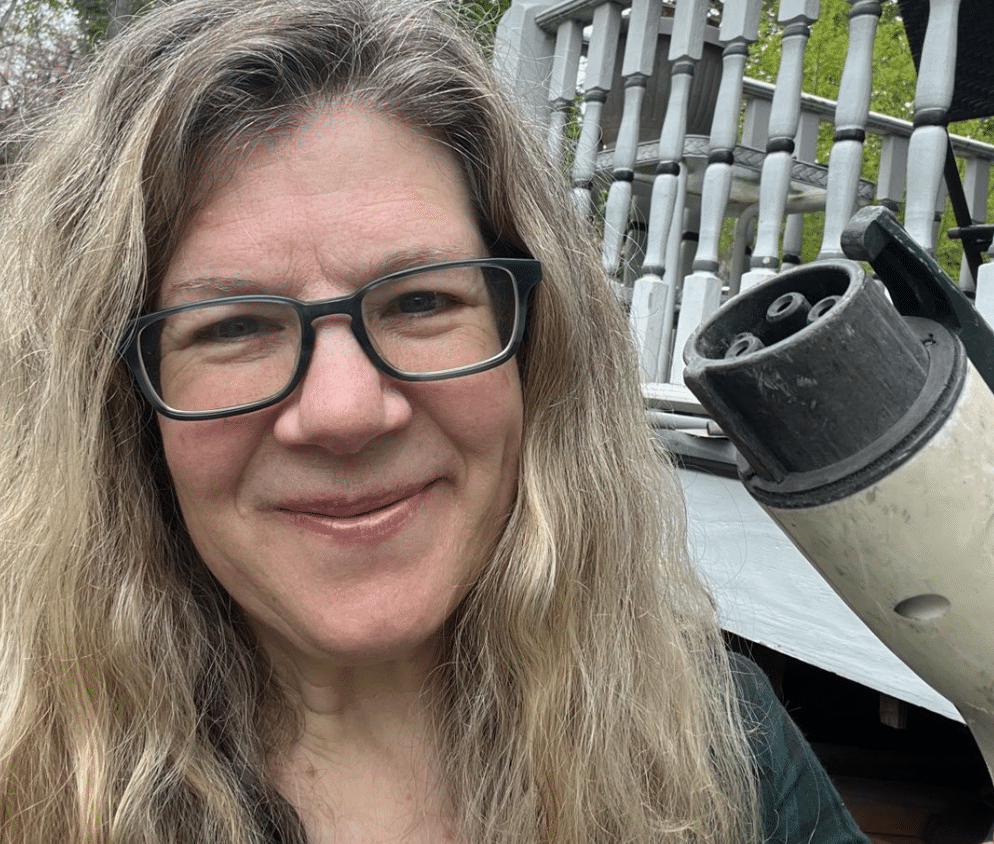We need creative approaches to help us tackle the climate crisis, and climate fiction is one of them. When we have creative minds producing compelling stories about climate change, they offer up ways to think critically about how we interact with the earth. They are showing us how to think creatively about climate change. And we should listen.
Imagine 2200, Grist’s climate fiction contest, celebrates stories that offer vivid, hope-filled, diverse visions of climate progress. Discover the 2024 winners or sign up for email updates to get new stories in your inbox.
Gen180 sat down with Tory Stephens, the Creative Manager of Imagine 2200 at Grist, to discuss the importance of climate fiction storytelling. You can watch the recording here, or read the interview below, edited for length and clarity.
———
Jamie Wertz, Gen180: Tell us a bit about the Imagine 2200 project.
Tory Stephens, Grist: The full name is Imagine 2200, Climate Fiction for Future Ancestors. It is a writing initiative in some ways. Essentially we have this contest, a three-month window, where we ask folks to send in their stories, anywhere from 3,000 to 5,000 words. They are full of hope, climate solutions that are culturally authentic, and you really feel like you live in the story when you’re reading them.
We ask for vivid characters that are intersectional and celebrated in a multitude of ways. We’re looking for diverse characters that are living through the crisis and coming out on the other end in a green, clean, and just world.
So the 2200 piece in the name is huge. It allows people to think about the future as opposed to what’s happening right now. Just by doing that, people can come out of their shell and dream about the world that they want. It is a writing-specific initiative, but there’s the other end of it where we, the readers, get to read these cool stories, dreams, and visions that people are pouring out.
I’ll add that this is an initiative out of Grist Magazine. Grist is an independent, nonprofit media organization. You don’t have to sign in to read our articles. They’re free and open for everyone because we believe that the climate crisis is the most important thing that we all need to focus on and talk about.
Jamie: There’s so much climate news that’s behind a paywall and we at Gen180 love that Grist is making it accessible, while focusing on solutions and intersectional storytelling. Does climate storytelling generally and climate fiction specifically play a role in the development of real-world climate solutions?
Tory: I think one of the biggest problems we have with climate is getting people on board around the idea that we can get out of this crisis, that there are solutions. We have to work together, we have to dream together, and we have to think about hope collectively. And so what I think the project does is it fills a gap.
We have to work together, we have to dream together, and we have to think about hope collectively.
A project called Good Energy was looking at what was going on with storytelling in Hollywood. Was climate being addressed? And they found a measly 3% of our stories were focused on climate. So there’s just not a lot of storytelling going on around like what I think is the biggest issue of our time.
So climate fiction focuses people’s attention on the crisis and meets them in a way that is convenient or fun for them. It can come out as a romance, a mystery novel, a detective story, or something comedic.
I always say this thing about the movie The Cable Guy. What if Jim Carrey “The Cable Guy” had been a solar panel installer? You literally could have the exact same plot, you know, but someone has a role that relates to a job in a renewable sector. I don’t think everything has to have this strong climate plot — it could be light touch or a big touch. A movie about this existential crisis and how we’re going to solve it doesn’t make for a good movie.
So this flexibility within storytelling and climate fiction is an underutilized climate solution in itself.
Climate fiction focuses people’s attention on the crisis and meets them in a way that is convenient or fun for them. It can come out as a romance, a mystery novel, a detective story, or something comedic.
There is a lot of news and facts and figures and reports and science. We need that stuff. And that can even help underpin the stories. But we also need fantasy climate fiction and afro-futurist climate fiction. If that was the call to action, we could be bringing more people into the conversation.
Jamie: Agree, we need to be reaching people, but we need to be shifting their hearts and minds. And at Gen180, we’re doing that through comedy and through working with comedians to help shift the narrative. And I think climate fiction has a similar, extremely critical role to play in bringing new audiences and new people into that conversation through small threads.
For the initiative more specifically, could you talk about the process of collecting stories? I know you all set parameters that encouraged authors to choose hope over dystopia and stress the importance of cultural authenticity in climate fiction.
Tory: The process is actually quite complex. We checked in with a lot of literary folks around the world and in the United States to just see how contests are run, and what are the tactics out there. We brought on three folks to help us with the reviewing. They’re fiction editors at various magazines from either speculative fiction, solar punk, or sci-fi. They know that we’re looking for hope-filled climate fiction stories that have intersectional characters, and that have stories that are very culturally authentic.
So what do I mean by that? So let’s start with intersectional characters. We don’t want characters that I call “Lego people,” where you can just pop their heads off and put them on another person. We want people we might encounter and who we love and their lives interact with the power dynamics that exist in the world.
I’ll use an example from a beautiful story that we have called Canvas Wax Moon, which is a climate fiction story, but it’s also this term that I came to know called lunar punk. It focuses on a chosen family that is witchy. They come together to support a woman who is having a miscarriage or an abortion. What makes that really rich and what makes the character kind of more layered is that many women have had a miscarriage or an abortion and that makes the story a lot more relatable to whoever’s reading it and true to a woman’s experience.
The other aspect of this is that the woman is supported by her family in this endeavor with herbal help. Her brother takes her to the water to have that moment under the moon. It’s more of a light-touch climate fiction story. It’s not fully about the climate, but they’re addressing some environmental and climate concerns. Those are the kind of stories that we really want to bring to the forefront.
There are other stories that take place in Indonesia and stories that take place in Jamaica. One author felt comfortable submitting their story because they said to me, they knew that we wouldn’t push back about the language in their story and felt comfortable submitting. So the cultural authenticity, the intersectionality, is really important to the project, something that we’re not going to abandon.
You also have hopefulness. We’re not looking only for utopian stories; there’s this term that’s come out of the UK that I think describes a decent amount of our stories, called “thrutopia,” where you’re not totally on the other side into a full utopia where everything’s figured out, but some interpersonal problems and challenges still exist, while painting a picture of a world we want that’s clean, green, and just.
We have a lot of writers writing to us and saying, you know what, I’ve been writing dystopian stories, horror stories, I never thought in my life to write a hopeful story. Writers are telling me, “I don’t know why I didn’t try to do this. I’m a writer who likes a challenge. And now I’m into writing hopeful narratives and stories.”
Jamie: I think it’s great to get writers involved in that new way of thinking about the future as a perfect gateway to getting readers and others to think about it, too. Recently you’ve been talking about how climate storytelling is one of the most underfunded, but necessary and effective climate solutions. Can you unpack this for us?
Tory: The underfunded piece is something that I’ve come to realize after being in the climate community for a while. Everyone is saying the same thing, that the journalistic side has a serious philanthropic dedication. But on the climate storytelling side, whether it be fiction or just climate storytelling broadly, folks are struggling with getting funding for their projects.
The production of these stories and the consumption of them is running ahead of the advocacy needed to gain the attention of the philanthropist. So I’m like, wait, let me tell everyone about it so all these people that are doing amazing work can get some funding and increase the number of stories out there, increase the quality, and increase the art that accompanies the story.
Let me make the case for why it’s necessary. So I talked about this a little bit earlier, but we need thousands of flowers to bloom to create narrative change.
We need a thousand flowers or stories or points of interest where people engage with the climate conversation from a non-factual point of view. I want to see climate narratives in the world that offer me a place to dream and envision what the world could be like. We need that to happen in different ways, genres, and platforms. And so what I don’t see is that happening. And I think if it did happen, you would have all these different conversations happening from a new angle.
We need thousands of flowers to bloom, or stories or points of interest, where people engage with the climate conversation from a non-factual point of view to create narrative change.
I think it’s a low-cost, but really effective, way to reach people and talk about the climate crisis.
Jamie: Absolutely. I love that framing of planting a lot of flowers and seeing them bloom because we do need to bring new voices into this movement. There’s not a better way than through cultural approaches like storytelling so we can meet people where they are.
Last question to round things out. What gives you hope about our clean energy future?
Tory: There’s a cadre of people across the spectrum of from young to old, to urban to rural, that are stepping up to say, I want to do something about this. I want to work closely with my community to make where I live better. But they also care about what’s going on in the Global South and Cancer Alley.
People can be focused locally on where they live, but also have an eye towards what’s going on in other places and doing something about it. They’re sharing information with their community and having the important conversations that we need to have. I feel lucky to kind of be in a community with people who are pushing for a better world.
I really wish right now was a moment where we were saying “we can do things, we can build things, we can do this,” like we Americans did with the challenge of landing on the moon. But these days it is hard to get that narrative going. So what gives me hope are the folks who are invested in trying to get this narrative changed.
Jamie: Well, this has been great. I’m so excited to read some of the stories. Can you remind us when it launches and how people can dive in?
Tory: Yeah, thank you for that. We have a new collection coming out. This will be our third collection. It will be right on the front page of Grist.org. You can also sign up for our climate fiction email list. And if you’re interested, you can also check out the old stories by just searching Imagine 2200.















